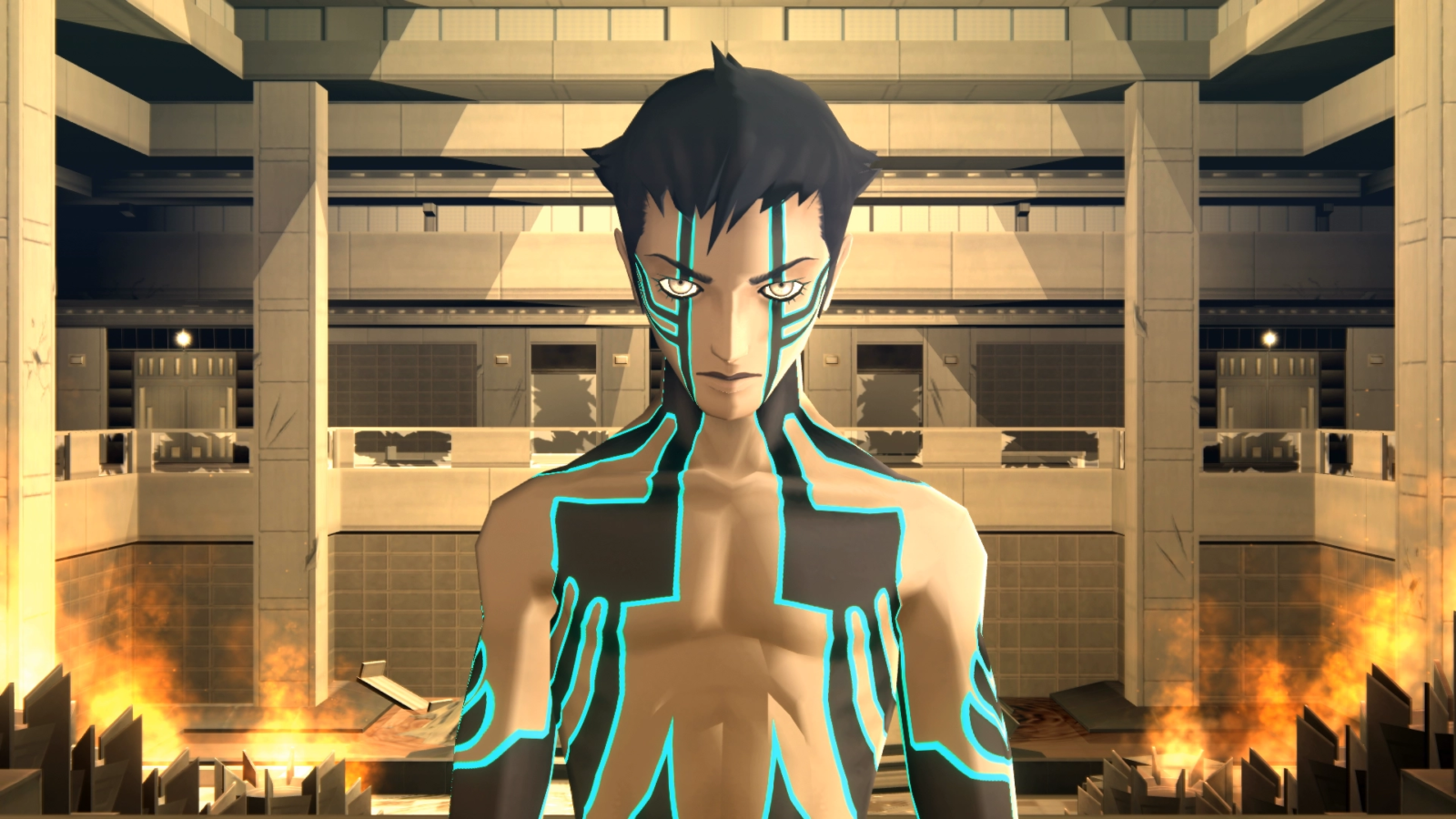Anyone who claims to be a fan of JRPGs should be familiar with the Shin Megami Tensei series. Though overshadowed in recent times by its spinoff sister games like the Persona series, the mainline games are recognized by fans to be some of the more iconic games that exist in the genre. And now in 2021, likely owing a surge in interest to the massively successful and accessible Persona 5, Atlus seems ready to introduce a younger generation of gamers to the rest of the SMT series, starting with one of the best entries in the franchise: Nocturne.
Shin Megami Tensei III: Nocturne originally released in Japan on the PS2 in 2003 (2004 and 2005 for North America and Europe, respectively). It has now been remastered in HD and released globally for the PS4, Switch, and on Steam for PC players. Nocturne is a game about the end of the world: namely, the apocalyptic event referred to as “the Conception,“ which occurs within the first twenty minutes of the game. The main character is referred to by most as the Demi-Fiend, a high schooler caught in the wrong place at the wrong time. He awakes in a newly destroyed world in the image of a deformed, spherical version of Tokyo and his body has taken the traits of a demon. Over time he becomes a central figure in the conflict between several factions to take the next step in reforming the world based on their ideals.
While Persona has taken the approach of being a more accessible, character-rich series focused on bonds and overcoming personal struggles, the mainline series games have always dealt with battles of ideologies. This notably manifests itself in most SMT games in the conflicts between Law and Chaos, Angels and Demons, or Gods and Devils. You won’t find any high school events or trips to the ramen shop with your friends here: the characters in the mainline series have to fight for their lives and navigate a conflict eons-old among real, tangible nightmares. These angels and demons are not manifestations of the self, but actual stuff of legends—whether those legends be the four Archangels, the elusive Mothman, or series icon Jack Frost. With humanity constantly pushed to the brink in this series, the protagonists wind up making decisions to decide the direction of the whole world, steering either away from or directly into all-out apocalypses.
However, you may be asking yourself, “Why do I care about some old JRPG that’s biggest mainstream achievement is creating a meme about a character that isn’t even from this series?” Well, besides the fact that Nocturne is one of the most thematically interesting, mechanically engaging games in the genre, as well as the reverence the series as a whole receives from its longtime fans, you may care about the implications of Atlus bringing the game to PC after all these years. The catalog of Atlus, who publishes the SMT series among a few other notable games like Catherine, Odin Sphere and 13 Sentinals. Only a handful of their games have made their way to PC, and mostly within the last few years. Prior to the release of Catherine on Steam in 2019, the only games that had made it to PC were two obscure MMOs and a Japan-exclusive strategy game.
Thus we arrive at the current situation, with Atlus’ parent company SEGA eager to dip their toes into Windows releases and ports. While Catherine was the first step in this trend, the company found massive success in bringing the previously Vita-exclusive Persona 4: Golden to PC. Despite having originally released in 2014, the game was a massive hit on PC, selling 500,000 copies within the first month of the rerelease. The popularity of the Persona series, itself a spinoff of mainline SMT, is nothing to scoff at, and SEGA seems to have realized that they can capitalize on this good image and cash in on Atlus’ extensive backlog of critically acclaimed RPGs.
Frankly speaking, Nocturne’s port is not the most technically impressive. Atlus lost the source code from the original release, so the game has been rebuilt from the ground up in the Unity engine. The game honestly does look impressive despite this, but it does remain locked to 30 fps throughout. The voice acting, a new addition to this remaster, elevates the delivery of dialogue to a whole new level, but audio compression keeps the soundtrack and effects sounding just like the original PS2 version, for better or worse. The graphics settings are also barebones, and players on NVIDIA graphics cards may experience some crashes linked to their driver repositories. All in all, despite the flaws, this is absolutely a superior version of the game for first time players, even at full price. With Nocturne, Sega has opened the floodgates for the SMT series as a whole to thrive with a younger audience. Popular spin offs like the Devil Survivor series or Strange Journey, which were previously handheld exclusives, can find new life on PC with a much broader audience. The latest mainline entries, Shin Megami Tensei IV and it’s sequel Shin Megami Tensei IV: Apocalypse, are in a similar situation. Raidou Kuzunoha, who has a very prominent cameo appearance in Nocturne, could finally get the recognition he deserves in his own games, both previously released on the PS2. The next entry in the series, Shin Megami Tensei V, is slated for release on November 11th this year and is currently exclusive to the Nintendo Switch, but with the blooming success of sales on PC, perhaps we’ll see that change sooner than later. – Aaron Reyes, TYF Contributor
Advertisement
